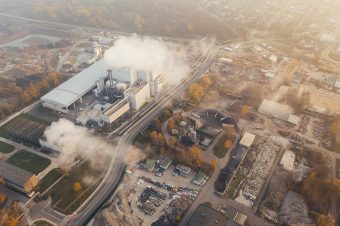
The fashion industry remains one of the world’s top polluters and shows no serious tendencies to change its business models and make them more sustainable.
Members of the global movement Fashion Revolution, which promotes human and environmental rights and sustainable fashion goals, have released a new report titled “What Drives Fashion”. The report analyzes 250 of the world’s largest fashion brands and ranks them based on their climate and energy-related data transparency.
The research revealed that the fashion industry significantly lags in achieving climate goals and still heavily relies on fossil fuels. This is an urgent situation, as 86 percent of companies lack a public goal to phase out coal, and 94 percent lack a public goal for renewable energy.
Nearly a quarter of the world’s largest brands do not disclose any data on the decarbonization of their operations, indicating that addressing the climate crisis is not a priority for them.
More:
- Regional Fora Aim to Increase Country Ambition Ahead of Next Round of Climate Plans
- New Law to Make Products on the EU Market More Sustainable
- Islands need resilient power systems more than ever. Clean energy can deliver
For 145 brands (58 percent), it is unclear what progress they have made in reducing greenhouse gas emissions. On the other hand, less than half (47 percent) of brands disclose their commitment to science-based emission reduction targets, while 42 per cent reveal their progress toward these goals. Regarding the source of electricity needed for production processes, fashion companies are also reluctant to share data. Less than half (43 percent) of brands are transparent about their electricity procurement at the operational level, and even fewer (10 percent) at the supply chain level. However, since the factories of major fashion brands are mostly located in countries that heavily rely on fossil fuels, it is clear that renewable energy sources have little (if any) share in powering the fashion industry.
Even so-called sustainable clothing can still be produced using fossil fuels. The fashion industry’s impact on the climate is primarily examined through the lens of the materials used in our clothing rather than the production processes behind them. While 58 percent of brands disclose goals for using sustainable materials, only a small percentage reveal the energy sources in their supply chain, meaning sustainable clothing could still be produced in factories powered by fossil fuels.
According to the latest data, the value of the fashion industry is estimated at over 770 billion dollars, making it one of the most prosperous industrial sectors. As the fashion industry expands, so does the demand for fossil fuels, indicating that fashion brands must urgently turn to renewable energy sources to contribute to a 50 percent reduction in greenhouse gas emissions by 2030, according to the Fashion Revolution movement.

